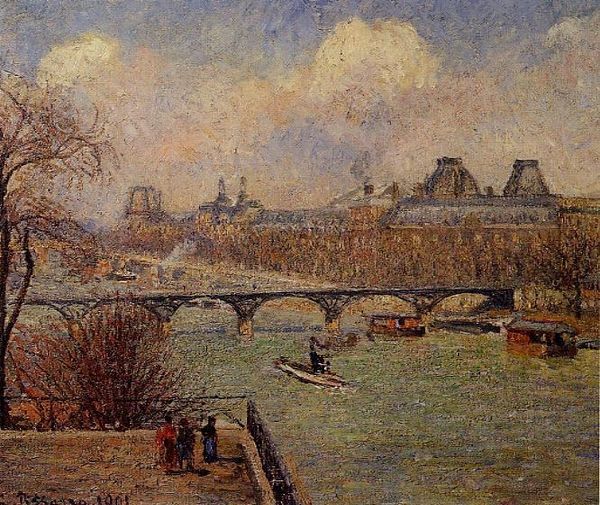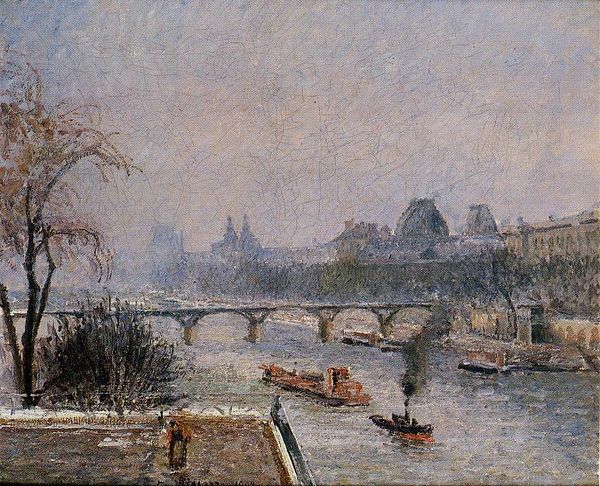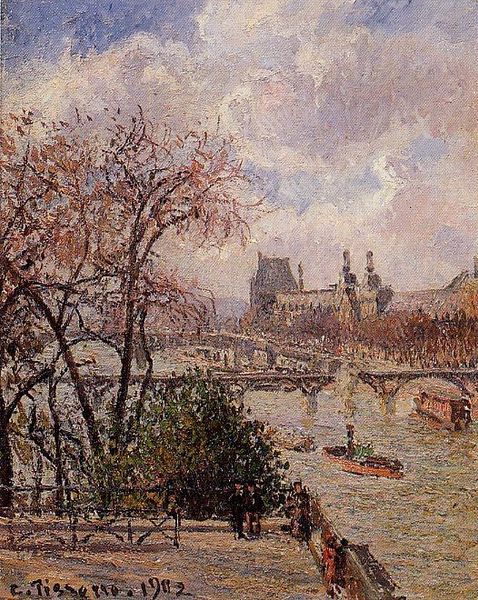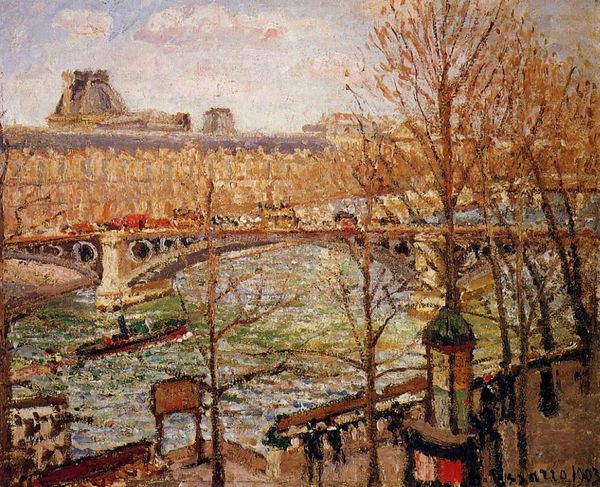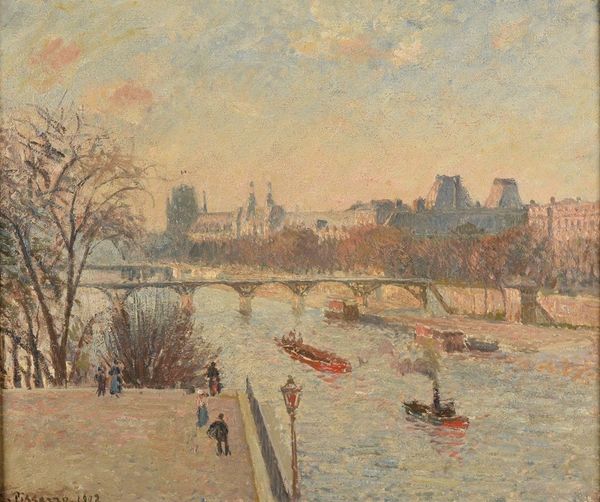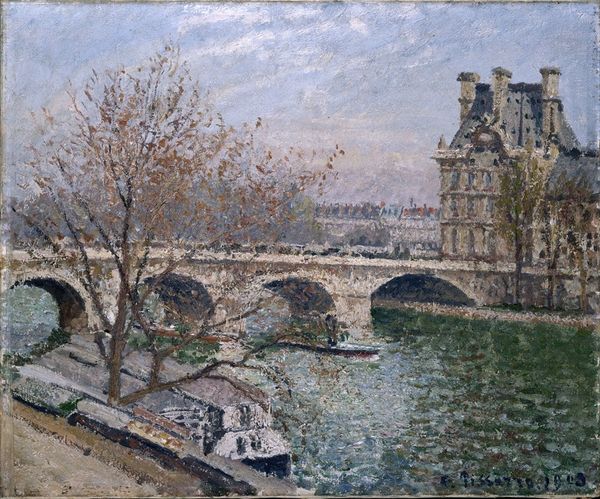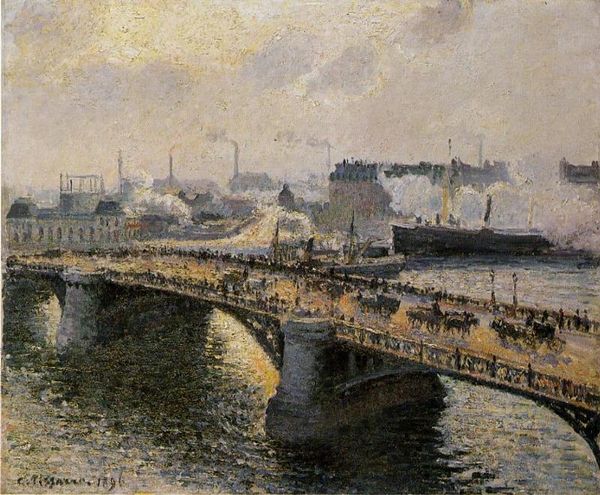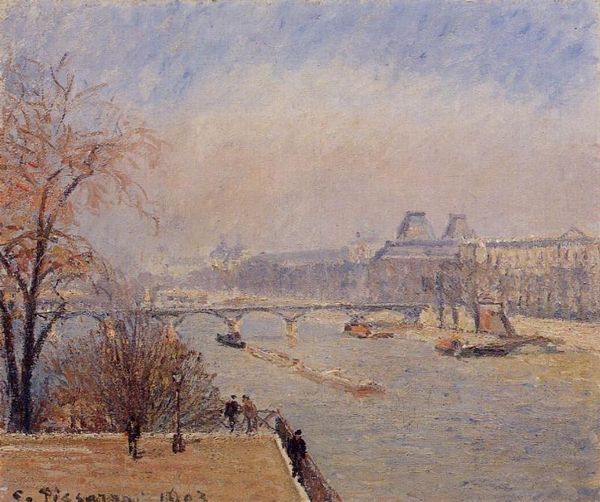
Dimensions: 38 x 46 cm
Copyright: Public domain
Editor: This is Camille Pissarro's "The Louvre," painted in 1901, an oil painting depicting a view of the famous museum. The muted colors and the way the light catches the water give it a dreamy, almost nostalgic feel. What catches your eye in this piece? Curator: What strikes me is how Pissarro uses the iconic Louvre as more than just a building; it’s a vessel for cultural memory. The way the light dissolves the rigid structure, it almost becomes a dream itself, a symbol of art and history blurring into our present moment. Notice how he places the everyday people in the foreground? Editor: Yes, they seem almost oblivious to the grand structure behind them. Curator: Exactly! They're living their lives, walking along the Seine. This juxtaposition hints at the Louvre's enduring presence, yet life continues regardless of these grand institutions. Do you see any other symbolic meaning in his brushstrokes? Editor: The choppy water, maybe representing the constant flux of time? Curator: Precisely. Water is an archetypal image, and in this instance, it could be seen as how memory constantly erodes and reshapes itself. How might our understanding of cultural heritage shift when presented in such an impermanent manner? Editor: That's a fascinating thought! It makes me think about how museums try to preserve things perfectly, while life is always changing around them. Curator: And maybe that tension is what Pissarro is subtly pointing out. Editor: I never would have seen that on my own. Thank you for sharing your expertise with me today. Curator: It’s been my pleasure. Remember, art is always open to interpretation, constantly resonating and reforming in dialogue with cultural experience.
Comments
No comments
Be the first to comment and join the conversation on the ultimate creative platform.
